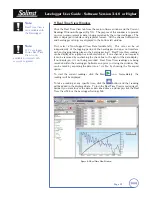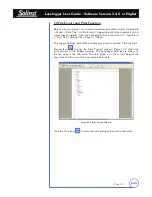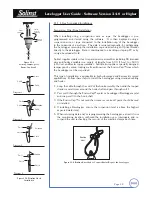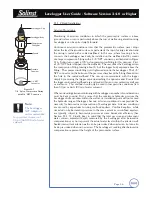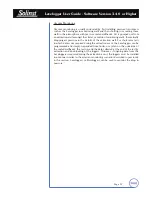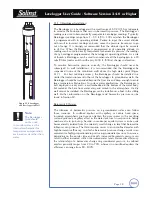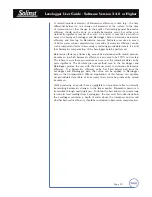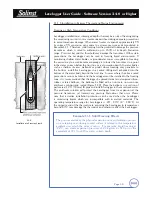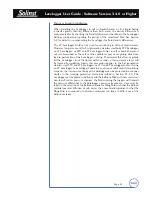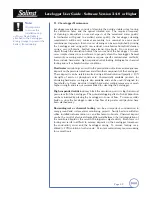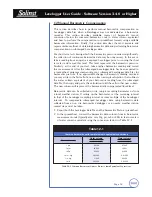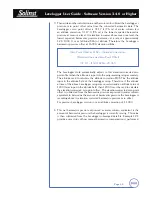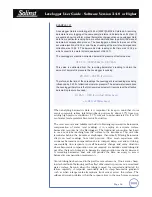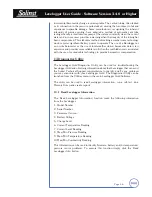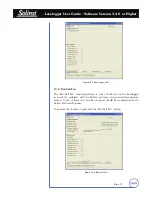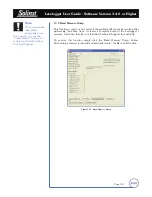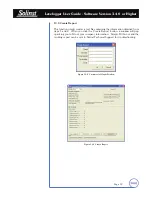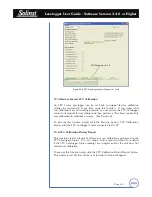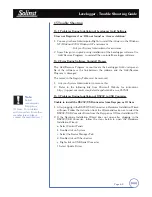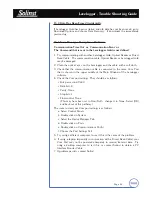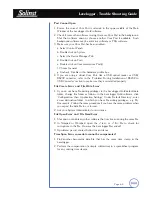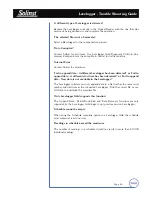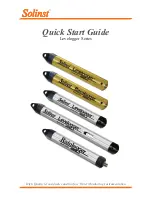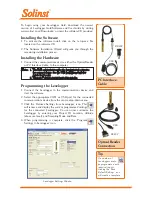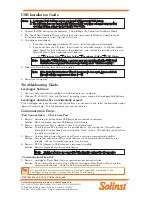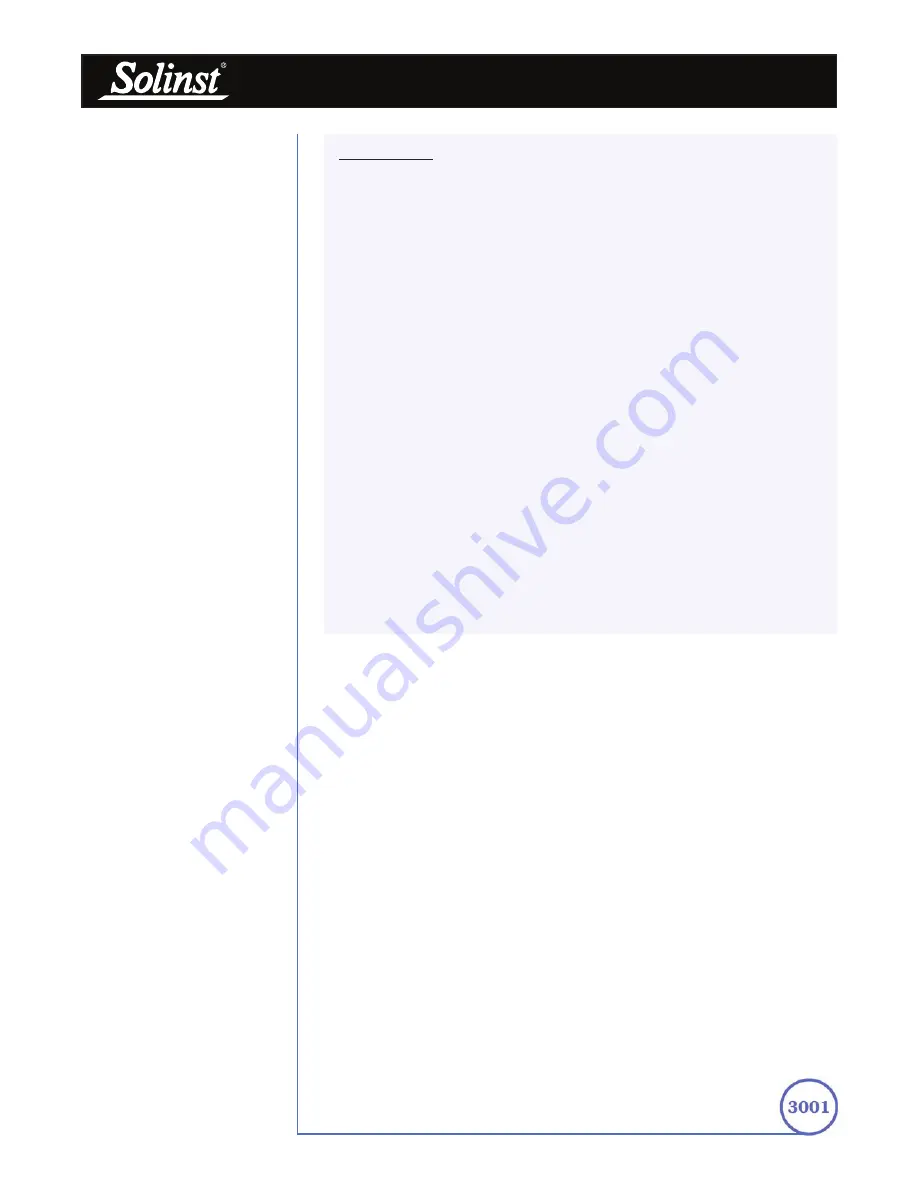
Levelogger User Guide - Software Version 3.4.0 or Higher
Page 55
EXAMPLE 12.1
A Levelogger Gold is monitoring at 1625 m (5332 ft) AMSL in Colorado. A recording
barometer is also logging at the same sample interval in barometric units of psi. If
we examine how to perform manual barometric compensation on Levelogger Gold
data from a particular reading time, we will understand how to perform the manual
barometric compensation process. The Levelogger’s altitude field was set at the
accurate elevation of 1625 m and the level reading at the start of submerged data
collection was 10.25 ft. The barometric data reading at that time was 12.18 psi
which converts to a water column equivalent of 28.15 ft.
The Levelogger’s elevation-corrected barometric pressure offset value was:
31.17 ft – (5332/826) ft = 24.715 ft
This value is subtracted from the recording barometer’s reading to obtain the
amount of barometric pressure the Levelogger is sensing:
28.15 ft – 24.715 ft = 3.43 ft
Therefore, at the time of these readings the Levelogger’s level reading was being
influenced by 3.43 ft of effective barometric pressure. The actual water level above
the Levelogger therefore is the total level measurement it records less the effective
barometric pressure it sensed:
10.25 ft – 3.43 ft = Actual Water Level
= 6.81 ft of Water Level
When analyzing barometric data it is important to keep in mind that storm
events commonly reduce total atmospheric pressure by about 1.7% from pre-
existing high pressure conditions. 1.7% converts to approximately 0.6 ft or 0.2
m of water level equivalent barometric fluctuation.
The most accurate and reliable method of obtaining representative barometric
compensation of water level readings is to employ an accurate surface
barometric recorder (ie. the Barologger). The traditional convention has been
to use a vent tube reaching from the surface to the transducer. This vent tube
terminates behind the transducer diaphragm, theoretically filtering barometric
effects on level readings from total pressure. After much experience with
erroneous barometric compensation due to crimped, damp, wet and cut tubing,
unacceptably slow response to small barometric change and many situations
where barometric compensation was not required, we decided vented tubing did
not offer the level of integrity in barometric compensation our clients deserved.
A recording barometer does and will provide the data necessary to access
barometric compensation requirements.
Vented tubing has been used in the past for several reasons. One it was a cheap,
low tech method of balancing out the effect of barometric pressure on a monitored
water surface. Second, when the tubing is cared for, inspected and tested for
failure regularly, it responds reasonably well to steep barometric gradients
such as when a large scale atmospheric front moves across the surface. The
seldom discussed problem is that the response time to the much more common

